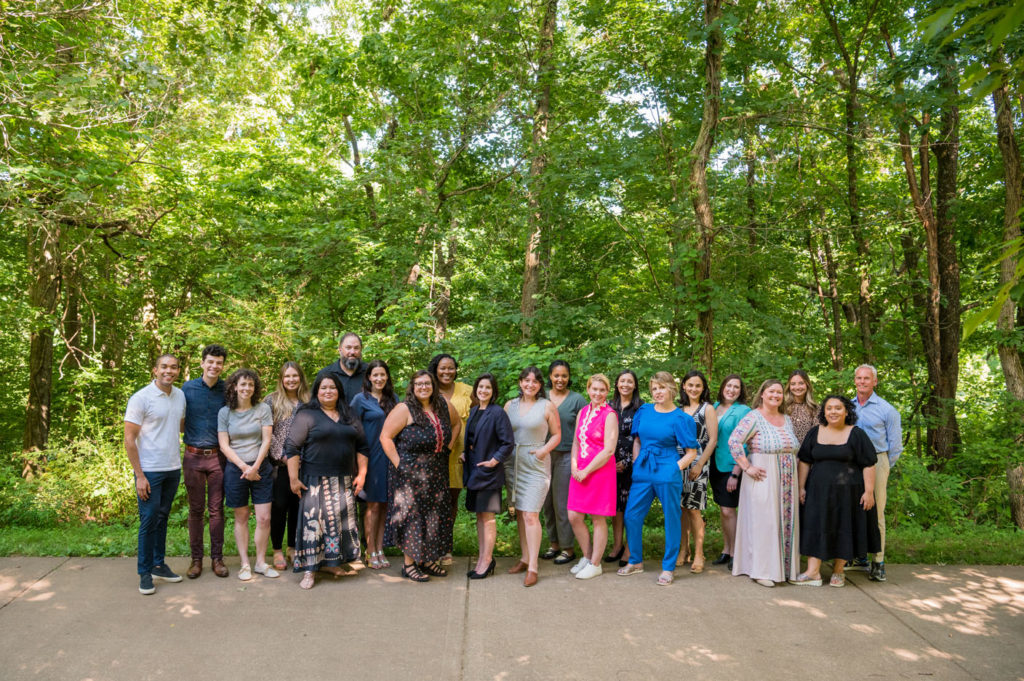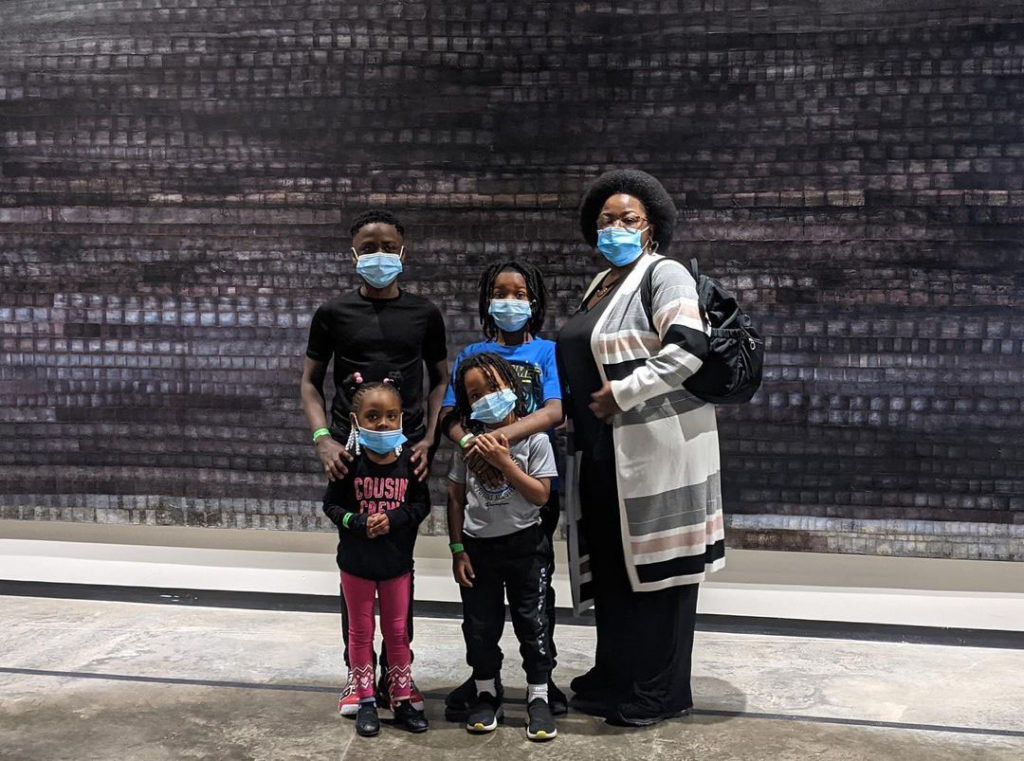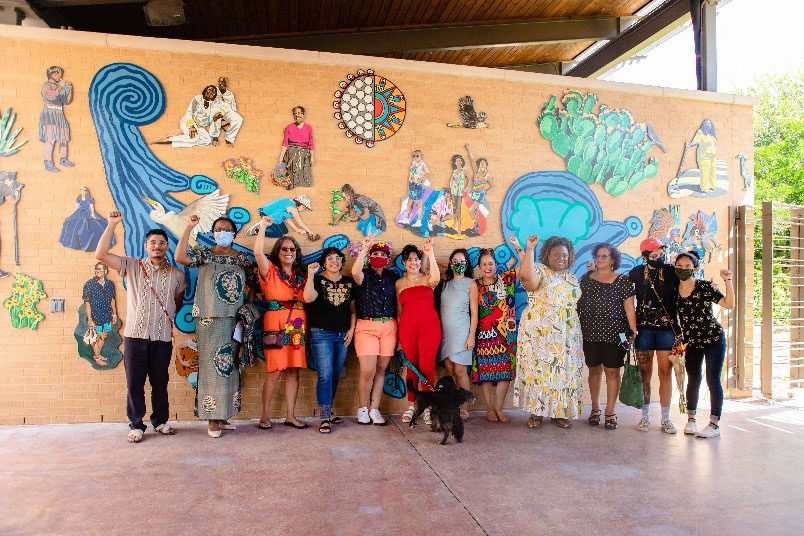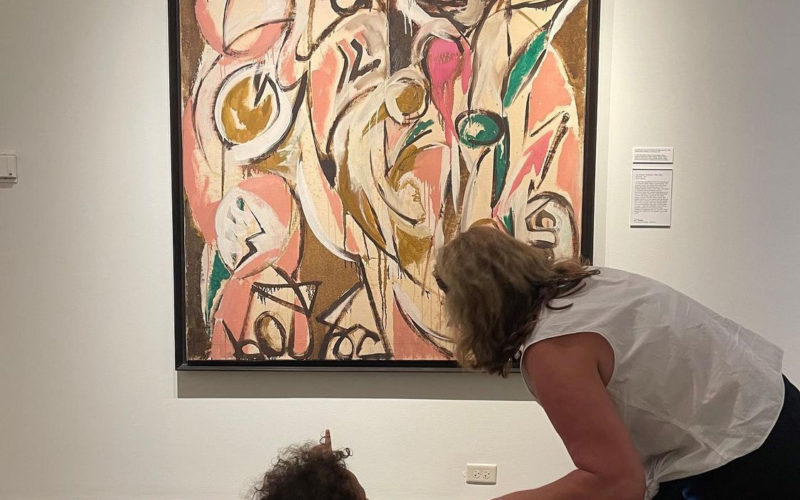April Wallace
awallace@nwaonline.com
In the family of American museums, you could say that Crystal Bridges Museum of American Art is now an older sibling.
Its little sister is Art Bridges, a relatively new nonprofit organization established by Alice Walton that builds lasting relationships with other museums across the country through collection loans, traveling exhibits, the creation of art programs, funding and much more.

“It’s an art and art education delivery system,” says Paul Provost, chief executive officer of Art Bridges. “We’re in the business of delivering art and education around that art, then activating it once we distribute and get them on the road.”
Since it formed in 2017, Art Bridges has helped connect a total of 170 museums, enabling artworks and collections that would otherwise sit unused in a museum’s storage facility to be on view and celebrated at smaller museums around the country.
But Art Bridges is not done forming that network yet. It plans to continue increasing partnerships with museums across the U.S., says Gabriel Ford, director of marketing and communications for the organization.
The Los Angeles County Museum of Art, the Museum of Fine Arts of St. Petersburg in Florida and the Missoula Art Museum in Montana are among the current partners in the national network.
Provost spoke openly about the mission and purposes of the organization during a recent episode of “Onward Ozarks,” a podcast series created by the Northwest Arkansas Council, recorded over Zoom for a large audience.
“Generally the big museums play with each other only,” Provost says. “We want to change how they work with each other.”

Art Bridges is becoming the connector of these big, mid-size and small institutions.
In a promotional video, Alice Walton says that she hopes the organization will ultimately help attract audiences who don’t think of themselves as museumgoers.
“The opportunities they have, the funding we can give museums around the country, tells a new, expanded story and brings in new audiences,” Walton says. “To me that is just thrilling.”
They’ll be attracting new audiences in part by bringing these larger, more diverse and historically important pieces closer to folks’ hometowns, making it easier for them to go see the works. It’s similar to what Crystal Bridges did for Northwest Arkansans by enabling them to see much more art here, rather than having to travel to Tulsa or Kansas City or elsewhere, Walton says.
Art Bridges will do this for others on a national level.
“Only about 5% of a museum’s collection is on display,” says Randy Wilburn, host of “Onward Ozarks.” “Art Bridges is important so people can actually see and appreciate these works.”
Works, Wilburn says, that otherwise wouldn’t see the light of day.
This year’s signature program is the collection loan program, a cohort system that helps museums build a working relationship over time. Provost believes this function, which is in its pilot phase right now, will have the greatest impact of all the nonprofit’s offerings as it grows.
The result of one of Art Bridges’ collection loans is Walker Evans American Photographs. Evans was one of the most influential artists of the 20th century, whose work documented the effects of the Great Depression. His photographs made up the first one-person photography exhibit at The Museum of Modern Art in New York 75 years ago.
This installation celebrates that milestone, and it has since been to five museums. This is the first time Evans’ photographs have been on display in Arkansas; they are at Windgate Museum of Art at Hendrix College in Conway until March 18.

Another example is the “Fighters for Freedom: William H. Johnson Picturing Justice,” an exhibition by an important Black painter that will go to as many as 14 museums. “Cross Pollination: Heade, Cole, Church and Our Contemporary Moment,” currently on display at Crystal Bridges, is another.
Some of the choices surrounding which exhibits go where are dependent upon the needs of the smaller museums, such as whether they are hoping to see more of a certain demographic visit.
Art Bridges also provides funding to the museums for learning and engagement surrounding the exhibits with that goal in mind. For example, if a museum wants to resonate with the African American community more successfully, the funding may help them do outreach with community organizations or people within that community to make them aware of the show and start conversations around it.
“It’s one thing to send works there, but then we’ve got to activate it,” Provost says. “We’ve got to get audiences in the door.”
Programming often looks different from location to location since each museum has different goals, Provost says. But it’s always simply another way to make sure the museum gets people there to see the art.
At San Antonio Museum of Art, for instance, funding went toward a mural project with the topic of “seeing yourself in art.” Local Indigenous communities made the mural there, which ensured that the community would be engaged in a meaningful way.
Art Bridges wants to help its museum partners create a sense of belonging for all of their audiences. It does so through the programming, but also through the choice of artworks.
For one collaboration with the Missoula Art Museum, they arranged an open curatorial talk on Zoom between the curator at Missoula Art, the artist in Alaska and Ashley Holland, associate curator for Art Bridges, who works from Bentonville. It complemented the work that they brought into the museum from tribal communities, work that Provost hoped they could identify with.
Wilburn echoed that sentiment, saying that access is important in creating the next round of artists, curators and museum staff.
“I wanted to become an art historian, I wanted to work in a museum,” Wilburn says. “But I didn’t see anyone who looked like me in that art world.”

Art Bridges has 21 team members, with a rate of 55% or 60% diversity, and they work together to more thoughtfully represent art made by people of all backgrounds.
That’s clear in their acquisitions as they collect pieces from women and diverse artists such as Lee Krasner, Jackson Pollock’s wife; Barkley Hendriks, a Black artist; Felix Gonzalez Torrez, an artist who died of AIDs; Henry Tanner; and Norman Lewis, an African American artist.
“At Art Bridges, we have those values of diversity, equity access and inclusion that are tremendously important to us,” Provost says.
He and his team hope to reach every corner of the country and inspire the minds of young people who could one day go into museum work themselves.
FYI
Art Bridges
Art Bridges objectives are to:
• Expand access to American art, especially in regions where there is currently less access.
• Energize the field of American art by exhibiting and activating works of art in exciting and innovative ways.
• Support partner institutions in deepening their connection with local audiences and their communities.
• Inspire institutions to open their vaults and share important works.
• Connect institutions of varying sizes and scopes in collaborative partnerships that provide opportunities for professional development
Source: Artbridgesfoundation.org



